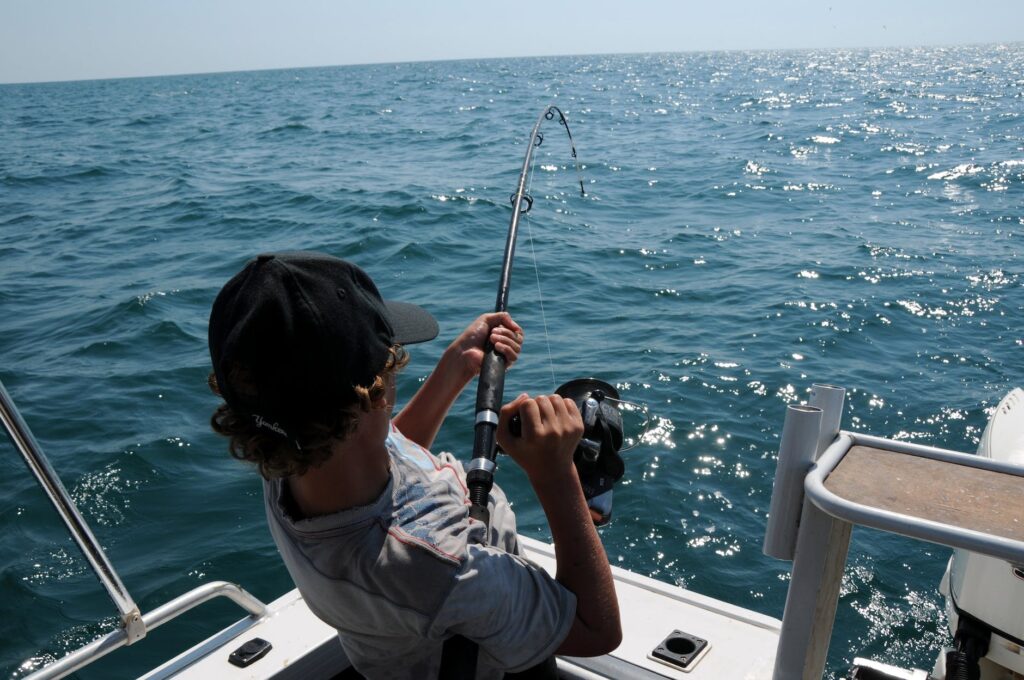Saltwater bottom fishing is a popular angling technique that involves targeting fish species that dwell near the ocean floor. Whether you’re a beginner or an experienced angler, mastering this method requires a combination of the right gear, techniques, and knowledge of the underwater environment. In this guide, we’ll walk you through the essentials of saltwater bottom fishing, covering gear selection, weight considerations, and the appropriate rod and reel setup for depths ranging from 10ft to 110ft.
Gear Selection for Saltwater Bottom Fishing
Before embarking on a bottom fishing expedition, it’s crucial to assemble the right gear to ensure a successful and enjoyable experience. The following components are key:
1. Rod and Reel: Choose a medium to heavy-action rod that’s capable of handling the weight of potential catches and the challenges of reeling up from depth. A spinning reel is often preferred for its versatility and ease of use.
2. Fishing Line: A strong and durable braided line with a pound test appropriate for the targeted species. Braided lines have low stretch and high sensitivity, allowing you to feel even subtle bites from deep-sea fish.
3. Terminal Tackle: This includes hooks, swivels, and leader materials. For bottom fishing, circle hooks are commonly used, as they tend to hook the fish in the corner of the mouth, reducing mortality rates when practicing catch and release.
4. Weights: Selecting the correct weights is crucial to reach and maintain contact with the sea floor. Egg sinkers, bank sinkers, or pyramid sinkers are common choices. The weight you choose depends on the depth, current, and the size of your bait.
5. Bait and Lures: Use fresh or frozen bait that’s attractive to the fish species you’re targeting. Squid, shrimp, cut bait, and small fish are popular options. Artificial lures like jigs can also be effective.
6. Fishfinder and Depth Sounder: Having a fishfinder or depth sounder onboard can help you locate the right spots where fish are likely to congregate near the ocean floor.
Choosing the Correct Weights
The choice of weights for bottom fishing is influenced by various factors:
1. Depth: The deeper the water, the heavier the weight needed to reach the sea floor. As a rule of thumb, choose a weight that allows your bait to reach the bottom without getting carried away by strong currents.
2. Current and Wind: If you’re fishing in an area with strong currents or windy conditions, you may need heavier weights to maintain contact with the bottom.
3. Bait Weight: Consider the weight of your bait. Heavier baits may require heavier weights to keep them in place.
4. Tidal Movement: During tidal changes, currents can vary significantly. Adjust your weight accordingly to ensure your bait stays near the bottom.
5. Experimentation: Don’t hesitate to experiment with different weights until you find the right balance that keeps your bait in the strike zone.
Rod and Reel Setup
For depths ranging from 10ft to 110ft, follow these guidelines for your rod and reel setup:
1. Rod: Choose a medium to heavy-action rod with a length of 6 to 7 feet. The rod’s strength will help you handle larger fish and the challenges of deep-water fishing.
2. Reel: a high-quality spinning reel with a strong drag system. Look for a reel size that matches the weight of the line you’re using. A reel with a smooth retrieve is essential for combating fish from depth.
3. Line: Braided lines are highly recommended for bottom fishing due to their strength and sensitivity. Choose a line with a pound test that matches the targeted species and the fishing environment.
Bottom Fishing Techniques
1. Anchor Properly: Position your boat over the fishing spot and anchor securely to ensure you stay in place despite the current.
2. Drop to the Bottom: Release your baited hook and weight to the bottom. Feel for the weight hitting the sea floor.
3. Maintain Contact: Once your line is on the bottom, keep a slight tension on the line to feel for bites. Bottom-dwelling fish may nibble lightly or strike aggressively.
4. Lift and Drop: Use a slow and deliberate lifting motion followed by a controlled drop to mimic the movement of prey. This technique can attract the attention of fish.
5. Patience: Bottom fishing requires patience. Allow your bait to remain in the strike zone for extended periods, as fish may take their time before biting.
In conclusion, saltwater bottom fishing in depths ranging from 10ft to 110ft requires careful gear selection and technique application. Choosing the right weights, line, rod, and reel ensures you’re well-prepared to target a variety of species that inhabit the ocean floor. Understanding the factors that influence weight selection and mastering the techniques of maintaining contact with the bottom are essential skills for successful bottom fishing. So, gear up, anchor down, and get ready for an exciting adventure in the depths of the ocean!

